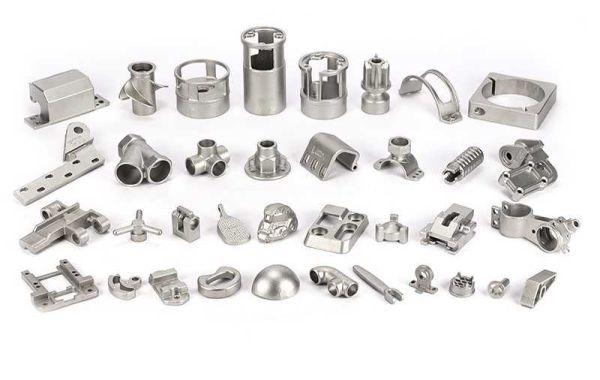The investment casting technique has been around for centuries. It is one of the most refined processes dedicated for manufacturing stainless steel castings, which, along with other materials such as aluminum alloys are extremely popular in the food processing industry. But have you ever wondered how stainless steel castings have earned their place in such an important sector? Well, thanks to the unique properties of this very material. This article will reveal its mystery and provide deeper insights into stainless steel castings.
Properties and Benefits of Stainless Steel Castings
Before we dive into why stainless steel castings are so popular in the food processing industry, we first need to understand the properties of stainless steel and the benefits this material provides.
Stainless steel is a versatile material known for its excellent corrosion resistance. Its non-porous surface provides hygienic properties, allowing for easy cleaning and disinfection. Certain grades of stainless steel that can withstand not only corrosive chemicals but high temperatures, therefore providing great heat-resistance suitable for various heat-intensive processes.
For example, arguably the most common grade for stainless steel is 304. This grade is particularly effective in environments exposed to moisture and acidic conditions, which is why it’s commonly used in food processing and kitchen equipment. Besides the corrosion resistant feature, it also offers sufficient strength to withstand certain degrees of impact and stress without compromising performance.
Another reason why this grade of stainless steel is one of the most popular choices in the food processing industry, is its aesthetic appeal. In many cases, stainless steel castings undergo a mirror polishing process, resulting in a shiny, reflective finish that enhances both the appearance and functionality of the material at the same time. This polished surface not only provides a professional, clean look but also helps in easy cleaning and maintenance, as it minimizes the buildup of residues.
Another example is 316 stainless steel, a highly regarded grade in the food industry. What makes this grade stand out is that it includes molybdenum, which significantly enhances its resistance to pitting and corrosion from chlorides and other chemicals. This added durability against chemicals makes 316 stainless steel especially suitable for chemical and food processing where exposure to acids and corrosive agents is common.
In addition to its practical qualities, 316 stainless steel castings can undergo mirror polishing, much like 304 stainless steel, for an attractive, reflective finish that’s both aesthetically pleasing and functional. Its ability to retain a polished, smooth surface over time makes it an excellent choice for visible, high-contact areas where both appearance and hygiene are priorities.
Now that we learned the properties and benefits of two of the most commonly used stainless steel grades in the food industry, next section let’s take a closer took at the applications of stainless steel castings in the food processing sector.
Stainless Steel Castings Applications for Food Processing
As previously mentioned, investment casting technique has been one of the most widely used techniques to produce stainless steel castings. This technique allows for the production of complex shapes and detailed castings, which are essential for creating the various specialized components used in food processing equipment.
In food processing, stainless steel castings such as valves, pumps, conveyor systems, mixers, and fittings. These parts are frequently exposed to moisture, acidic substances, and high temperatures, making the corrosion resistance of stainless steel, particularly grades like 304 and 316, indispensable. The non-porous surface of stainless steel castings also inhibits bacterial growth, contributing to the hygienic requirements of food safety. As mentioned above, often stainless steel castings undergo a mirror polishing process to achieve a smooth, reflective finish that enhances both the aesthetic appeal and practicality by facilitating easy cleaning and reducing the potential for residue buildup.
A typical application of stainless steel is the meat processing equipment, stainless steel casting parts and components like grinder plates, blades, and augers. These components must withstand frequent exposure to moisture and salt while remaining sharp and durable for cutting and grinding meat. The corrosion-resistant properties of stainless steel, especially in grade 316, are crucial for maintaining sanitary conditions and preventing contamination.
In food canning machines, parts such as conveyor belts, guide rails, and filling nozzles. These components must resist corrosion from acidic foods and high humidity environments typical in canning operations. Stainless steel’s resistance to acidic substances and its hygienic properties make it an optimal choice for maintaining product integrity and safety throughout the canning process.
For dairy processing equipment, stainless steel castings play an important role in creating milk pumps, valves, fittings, and pipeline connectors. These parts are constantly in contact with dairy products and need to maintain a high level of cleanliness to avoid spoilage and contamination. Stainless steel’s non-porous, smooth surface helps prevent bacterial buildup and can withstand frequent sterilization and cleaning processes.
Stainless steel castings are also extensively used in food processing machines, including mixers, blenders, and choppers. Components like mixing blades, impellers, and housings benefit from the material's strength and durability. These machines handle a wide variety of food products, often requiring high-strength parts that can endure continuous operation and resist wear over time. Stainless steel’s robustness and low maintenance requirements are ideal for minimizing downtime and replacement costs.
Other specialized applications include stainless steel castings in beverage processing equipment, such as carbonation tanks, filter housings, and taps, which are exposed to various pH levels and carbonation. Stainless steel ensures that these components do not alter the flavor or quality of the beverage, while the mirror-polished finish allows for easy cleaning.
Finally, stainless steel castings are frequently used in bakery and confectionery equipment, including rollers, cutters, and kneaders, where they come into contact with sticky or sugary ingredients. Stainless steel’s non-stick properties and resistance to corrosion are beneficial in maintaining equipment cleanliness and product consistency.
As you can see, we've highlighted a few common applications of stainless steel castings in the food processing industry, though there are far more than this article can cover. Food processing systems often incorporate other materials, such as plastics, aluminum, and various electronic components like sensors and circuit boards, to name a few.
Stainless steel casting parts and components seamlessly integrate into these systems, enhancing their durability, hygiene, and performance. With its versatility and adaptability, stainless steel complements other materials to create robust and efficient food processing solutions that meet industry standards for safety and functionality. In the next section, we will cover the manufacturing process of stainless steel castings and how these parts can be integrated into food processing machinery.
Stainless Steel Castings Manufacturing Process
The most common process for manufacture stainless steel castings is without a doubt, the investment casting technique, followed by sand casting and shell mold casting. What makes the investment casting process so unique is that this technique can handle such tight tolerances and intricate designs, therefore it is almost always suitable for parts and components require tight tolerance. Not only does this process offer a great precision but smooth surface finish. From small to large, light to heavy castings, and small to large quantities, this process can get the job done, although it may be more expensive.
Sand casting on the other hand, is a more cost-effective and versatile alternative for manufacturing stainless steel castings, particularly suited to producing larger components and parts with simpler design. While sand casting may not achieve the same tight tolerances and fine details as investment casting, it offers significant advantages in terms of cost efficiency, especially for lower precision parts or projects with large volume requirements. One notable advantage of sand casting is its ability to handle larger sections and thick walls, which can be challenging for other casting processes. This makes it particularly useful for producing parts like bases, housings, frames, and support structures that require strength and stability in high-stress environments.
Both techniques provide unique advantages and should be used according to the actual use cases. By selecting the appropriate casting method, manufacturers can optimize both performance and cost-efficiency, ensuring that each component is tailored to meet the demands of its application within the food processing industry and beyond.
Tailoring the casting approach allows manufacturers to not only meet but exceed the expectations of their clients, maximizing functionality and durability while staying within budget. In a competitive market, this adaptability can be a decisive advantage, providing food processing companies with reliable, high-quality equipment suited to their unique operational needs. By leveraging the strengths of each casting technique, manufacturers can build efficient, long-lasting equipment that enhances productivity and safety across a variety of food processing applications.
This is where Taiyuan Simis Investment Casting Co., Ltd shines, as a professional precision casting foundry with over 40 years of metal casting experience, we work on a project-to-project basis, selecting the most suitable casting technique based on specific requirements. We provide not only the casting services but a complete solution - from tooling design to shipping the finished castings to our clients’ doorsteps, we handle it all.
Contact us today for more information, we always make our customers proud.






